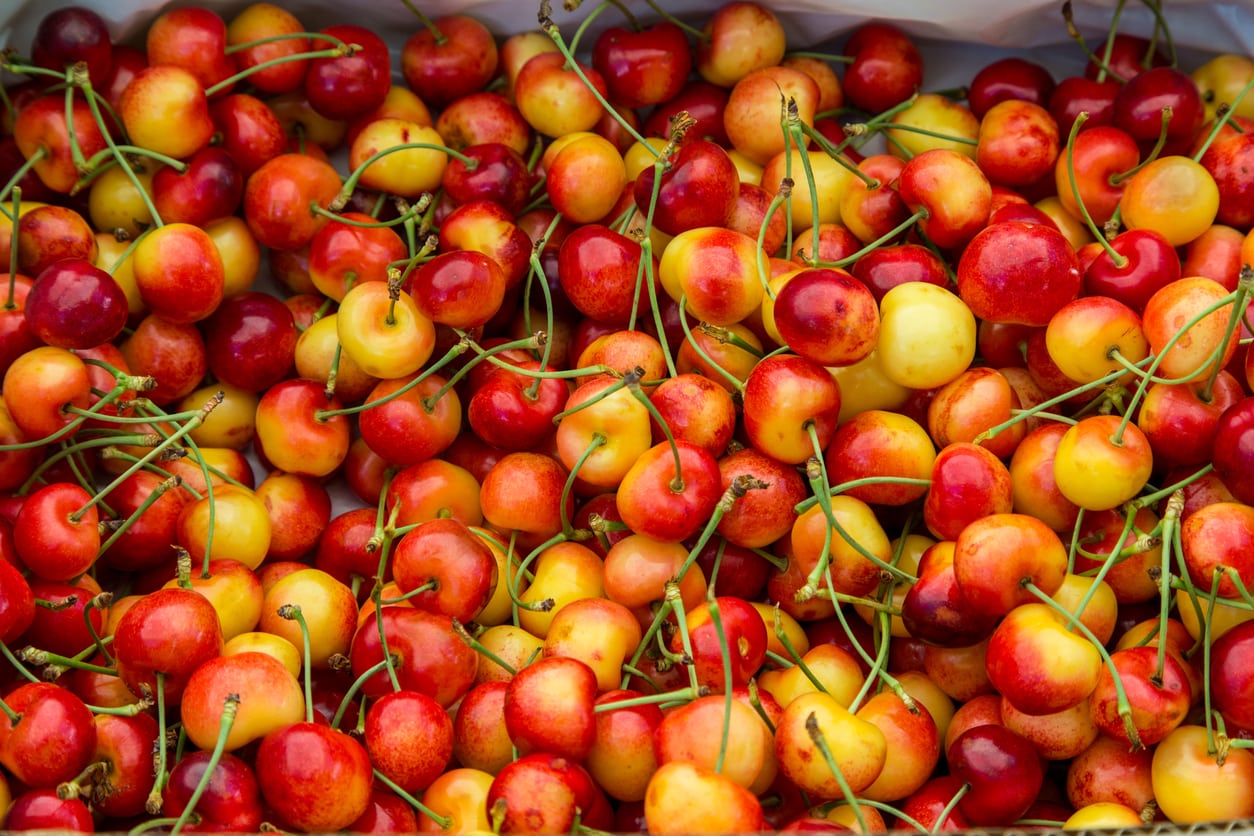Rainier Sweet Cherry Info – How To Grow Rainier Cherries


Given the reputation of the Rainier sweet cherry as the most delicious yellow cherry in the world, you might think that this cherry tree would be difficult to grow. Nothing could be farther from the truth. Despite the many spectacular qualities, care of Rainier cherry trees is relatively easy. Read on for tips on how to grow Rainier cherries.
About Rainier Cherry Trees
Rainier cherries resulted from a cross between the Bing and Van varieties. The trees are gorgeous in spring with showy pink-white blooms filling the garden with a lovely fragrance. This is followed by the next act: a large crop of outstanding cherries. For the grand finale in autumn, expect a fiery fall foliage display. The trees bear fruit early. Those with a Rainier in the backyard will be picking Rainier cherries in May or June, while other cherry trees are nowhere near ripe. Rainier sweet cherry fruit are yellow on the outside with a scarlet blush. The inner flesh is sweet and creamy white, giving it the nickname “white cherry.” Most gardeners agree that this is the best yellow cherry, and some insist that Rainier is the best cherry of any color. The large, yellow fruit is both bud hardy and crack resistant, giving it another edge over the competition. The cherries also tend to attract less birds than red cherries, probably due to the yellow coloring. The cherries store well too. They are wonderfully sweet right off the tree, but they also work well for baking, canning, and freezing.
How to Grow Rainier Cherries
If you are wondering how to grow Rainier cherries, the first step is to make sure that you live in an appropriate hardiness zone. Rainier cherry trees thrive in USDA plant hardiness zones 5 through 8. Plant the tree in loamy soil in a full sun location. Care of Rainier cherry trees is not harder than that of other cherry varieties, and includes irrigation, pest control, and occasional use of organic fertilizer. The trees grow to 35 feet (11 m.) tall, but can easily be kept smaller by pruning. This makes picking Rainier cherries easier and gives you the chance to remove dead and damaged wood. The tree is usually a heavy bearer, but it needs a pollinator. Black Tartarian, Sam, or Stella varieties work well and help keep those delicious cherries coming. Remember though, the tree takes some three to five years to fruit.
Sign up for the Gardening Know How newsletter today and receive a free copy of our e-book "How to Grow Delicious Tomatoes".

Teo Spengler is a master gardener and a docent at the San Francisco Botanical Garden, where she hosts public tours. She has studied horticulture and written about nature, trees, plants, and gardening for more than two decades, following a career as an attorney and legal writer. Her extended family includes some 30 houseplants and hundreds of outdoor plants, including 250 trees, which are her main passion. Spengler currently splits her life between San Francisco and the French Basque Country, though she was raised in Alaska, giving her experience of gardening in a range of climates.